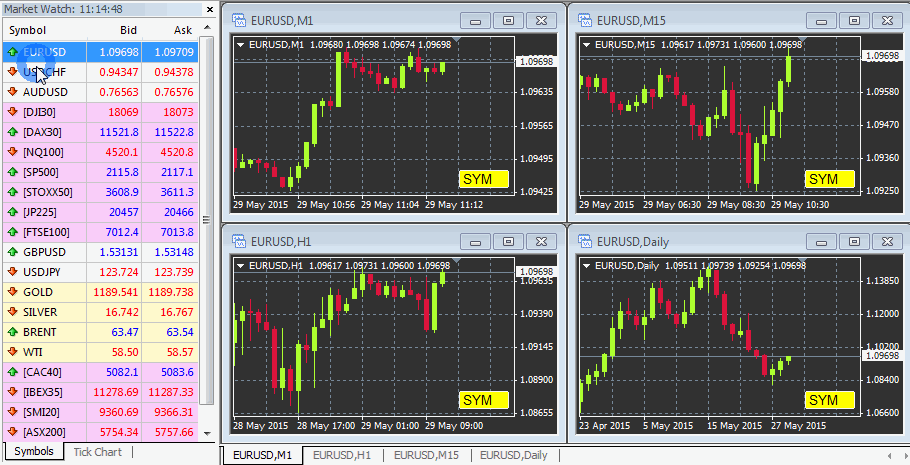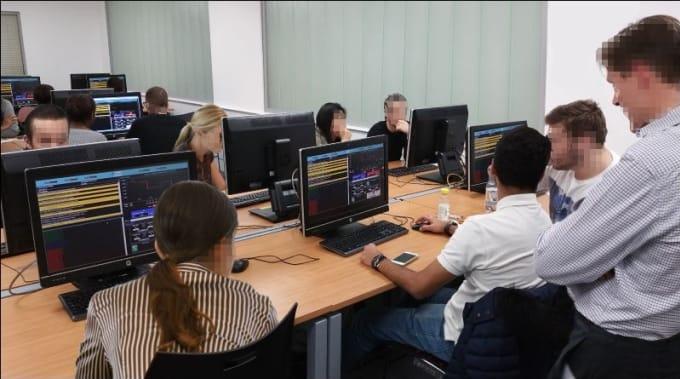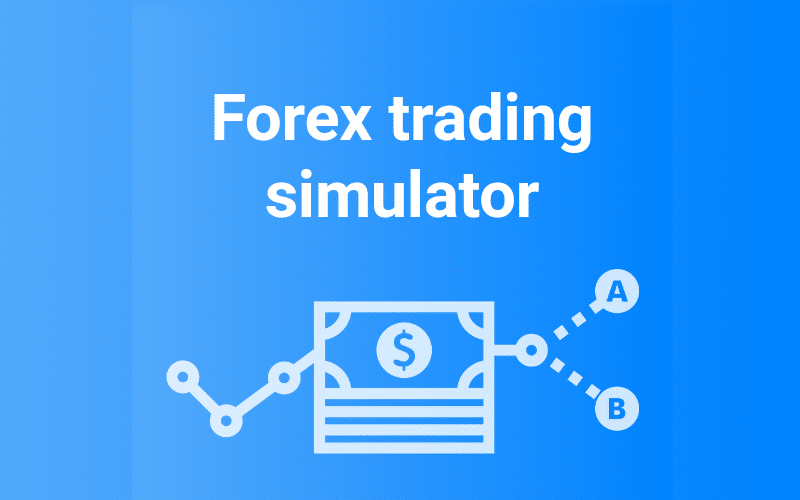Learning how to trade in a risk-free environment is a sure way of perfecting trading skills and strategies, highly needed to succeed in the highly competitive market. Likewise, it is essential to test a trading platform before putting actual money on the line. A forex trading simulator is designed to make one become a better trader risk-free.
What is a forex Trading Simulator?
A forex trading simulator is a program that simulates actual market conditions and allows traders to practice trading using virtual money. Such platforms mimic broader market activity enabling traders to have an actual feel of the market in a more realistic way.
A trading simulator shares the same attributes as a trading platform that allows traders to risk actual money. In this case, traders can access actual price quotes, financial instruments, and charting tools. Opening and closing trades in a simulator is made the same way as in a real account.
While providing the exact trading environment, a forex trading simulator allows traders to access historical price data and real-time data, therefore replicating the actual trading experience.
Why A Forex Trading Simulator?
Anyone looking to get a feel or a head start trading the currency market risk-free must sign up for a trading simulator. A forex simulator provides an ideal way of placing trades in the actual market without worrying about losing money. Given that emotions are significantly reduced, one can focus on perfecting trading skills and strategies.

Unlike in a real account, with a trading simulator, one can make several adjustments to understand the market better. For starters, one can adjust the speed at which candlesticks appear to get more where necessary and make more trades for practice purposes. For instance, one day’s data can be customized to appear on a one minute chart.
A forex simulator comes with all the tools of trading in a live account. A trader can carry in-depth analysis of the market as would happen in real account settings. The simulator essentially provides a way to familiarize oneself with trading tools for identifying trading opportunities.
Similarly, a forex simulator makes it possible to test dozens of strategies without worrying about losing money. By testing various strategies, it becomes easier to identify an ideal trading strategy that would be used to squeeze profits in a real account setting.
How to Choose a Forex Simulator
The forex market’s robustness means there are dozens of platforms claiming to offer ideal forex simulation capabilities. Before choosing a trading simulator, it is crucial to consider the following factors.
Real market Environment
A forex trading simulator should offer real-time data to have a good feel of the market and see how market fluctuations occur. Real-time market data also makes it possible to know the amount of time it takes for trading opportunities to crop up while trading with real money. In this case, it becomes much easier to determine whether to become a scalper or a positional trader.

A simulator offering real-time data allows upcoming traders to see how a specific trade would have performed in a real account. Likewise, it provides a sure way of learning how to trade and perfecting various trading strategies.
Flexible Deposit Amount
An ideal trading simulator allows one to adjust various parameters to a trader’s likings and desires. It should be possible for starters to adjust the virtual deposit so that a trader can practice with the amount they are likely to deposit in a real account.
Some trading simulators come with deposits of up to $100,000. Unless one is planning to deposit such an amount in a real account, it would not be right to practice with such an amount. With a forex simulator, the idea is to ensure one is subjected to real trading conditions, from the trading platform to the amount of capital used to polish trading strategies.
For instance, with $100,000 in a simulator account, one is likely to trade with a little caution as there is no risk of all the virtual money getting lost in the form of losses. However, with say $2,000, one is likely to be extra cautious while trading, given the increased risk of losing the $2,000.
Practicing with small amounts allows traders to learn risk management and money management, given realistic trading conditions.
Likewise, if you plan to go live with $2000 in a live trading account, ensure the forex simulator allows you to practice with $2,000 in virtual money.
Tools and Features on offer
While selecting a forex simulator, it would be wise to settle on a more complex and advanced platform to have the right foundation for forex trading. If you focus on a primary platform, it is possible to miss out on critical features and functionalities highly needed for successful trading.

The forex simulator should come with all the necessary tools and indicators needed for carrying out market analysis. For instance, the platform should allow you to backtest various trading strategies on historical data. In this case, it becomes easier to test various trading strategies on certain market events in the past in anticipation of them reoccurring in the future.
Broker
It is vital to settle on a forex simulator offered by a reputable broker. In most cases, you will likely end up trading with the same broker in a real account. While brokers are diverse and offer different platforms, it is important to ensure they are regulated. They offer a wide range of trading instruments, from currency pairs to commodities as well as stocks. It is also vital to consider the trading platform and tools they offer and the cost of trading in real accounts.
When to Move To a Real Account
Most forex trading simulators come with a time limit. In most cases, brokers allow traders to practice for a limited amount of time, i.e., 30 days, which is often seen as ample time to perfect a trading strategy and acquire the much-needed experience for live trading markets.
Trading in a demo account can be deceiving, at times, thus one reason why people are often advised not to spend too much time in simulators. Therefore, while starting in a simulator, it is essential to set a goal. In this case, put what you wish to achieve to make a giant leap into a real account. In some cases, traders set a goal of achieving at least 2% in profit in a forex simulator on a $1000 trading simulator account before making the big switch.
Before making the big switch, ensure you have tested a trading strategy, backtested it over and over again. The amount of returns and losses that a given strategy produces would determine a big deal if one is ready to transition into a real account.

It is important to transition into a real account when in the right frame of mind and psychology. Trading in a demo account is entirely different from trading the real market. Fear and anxiety often kick in while live trading markets, making it extremely difficult to remain consistent, as was the case in a forex simulator.
Likewise, one should only transition when they have completely embraced that trading is a game of chances where losses are part of the game. Once you have embraced losses, the fear of losing money would subside as one would focus on ensuring minimal losses on each trade.
Therefore, it is essential to have the right psychology to make profits and losses. With the right psychology, it becomes much easier to understand that one won’t be incredibly successful immediately. Becoming a profitable trader takes time.
Forex Trading Simulator Drawbacks
One of the most significant demerits of trading with a forex trading simulator is that such platforms don’t evoke emotional responses. Trading with virtual money does not produce any sentimental value as there is no risk of losing anything.
However, in live accounts, real-life emotions are a vital factor, which influences trading patterns. For this reason, a trader can be highly successful and profitable in a forex trading simulator but struggle to generate any substantial profits in a real account.
Forex trading simulators come with virtual money that has no tangible value. Likewise, a trader is likely to risk anything and place trades as they wish without worrying. However, it does not work like that in live market situations where actual money is usually at stake.
Bottom Line
A forex trading simulator offers a useful platform for launching a trading career by honing trading skills and strategies risk-free. Such platforms provide all the tools and features used in live trading, thus offering traders an opportunity to gain insight and experience trading live markets.
Forex Simulators make it possible to test out even the most aggressive strategies in a live market environment risk-free. However, it is essential to note that success in a forex simulator does not always guarantee success in a real account.
